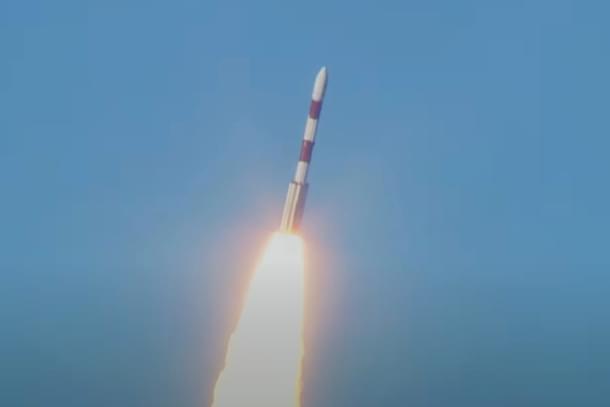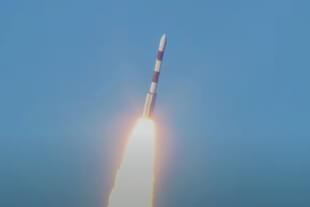News Brief
ISRO's PSLV-C59 Successfully Launches ESA's 'Groundbreaking' Proba-3 Solar Observation Mission—All About It
Kuldeep Negi
Dec 05, 2024, 04:32 PM | Updated 04:32 PM IST
Save & read from anywhere!
Bookmark stories for easy access on any device or the Swarajya app.


The Indian Space Research Organisation (ISRO) on Thursday (5 December) successfully launched the European Space Agency's "groundbreaking" Proba-3 mission on board its PSLV-59 rocket.
"The PSLV-C59/PROBA-3 Mission has successfully achieved its launch objectives, deploying ESA’s satellites into their designated orbit with precision," ISRO said in a statement on X.
The Indian space agency used the XL version of its workhorse PSLV rocket to launch the satellites.
The satellites were launched from ISRO's Satish Dhawan Space Centre in Sriharikota in Andhra Pradesh.
The PSLV rocket successfully placed the satellites into the intended orbit around 20 minutes after the launch.
ESA's Proba Missions
The Proba (PRoject for OnBoard Autonomy) missions are a series of in-orbit demonstration (IOD) missions from the European Space Agency, for demonstrating and validating new technologies and concepts in orbit.
Developed under the General Support Technology Programme (GSTP) of ESA, the Proba missions are based on small satellites, embarking payload and instruments to deliver actual data to users to demonstrate a new capability.
ESA has launched three Proba missions so far — Proba-1 in 2001, Proba-2 in 2009, and Proba-V in 2012.
The Proba-3 Mission
The Proba-3 mission is devoted to the demonstration of technologies and techniques for highly-precise satellite formation flying.
It consists of two small satellites launched together that will separate apart to fly in tandem, to prepare for future multi-satellite missions flying as one virtual structure.
Proba-3 marks the next step in formation flying. As a world first, its two satellites – the Coronagraph spacecraft and the Occulter spacecraft – will maintain formation to a few millimetres and arc second precision at distances of around 150 metres for six hours at a time.
The two satellites will create the conditions for observation of the Sun corona, synthesising the equivalent of an extremely large instrument.
One satellite features a telescope, kept in the centre of the shadow cast by the other satellite around 150 m away, thanks to an occulter disc.
Maintaining the correct position in the shadow requires a precise formation flying capability, down to a single millimetre of precision.
Each Proba-3 satellite is powered through high efficiency solar panels.
When in position the two satellites will be precisely aligned so that the Occulter spacecraft casts a shadow across the Coronagraph space craft.
The satellite called the Occulter Spacecraph (or OSC) features a 1.4-m-diameter occulting disk, which will be kept perpendicular to the direction of the Sun’s light.
This disk will cast a shadow, of about 8 cm width at around 150 m.
The satellite called the Coronagraph (or CSC) hosts a scientific telescope with a 5 cm aperture.
The goal is to maintain, owing to formation flying, the “Coronagraph” aperture within the 8 cm shadow with millimetre accuracy.
This will happen when the two satellites are close to the apogee along their highly elliptical orbit (more than 60 000 km altitude), where Earth's force of gravity is weaker and formation maintenance requires less propellant.
Proba-3 will be able to study the corona for six hours in every 19hr 36min orbit, a factor of a hundred improvement in uninterrupted study time.
Why the PSLV-XL was chosen for the Proba-3 Mission
The ESA selected India's PSLV-XL launcher since the lift required to place the combined Proba-3 satellites (550 kg) on their desired highly elliptical orbit is above the capability of ESA's Vega-C launcher, while Ariane-6 would be too costly for a tightly-budgeted technology demonstration mission.
Also Read: India Voted In Favour Of 10 UNGA Resolutions On Palestine, Abstained From Three: S Jaishankar
Kuldeep is Senior Editor (Newsroom) at Swarajya. He tweets at @kaydnegi.





